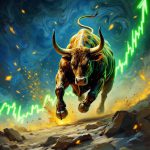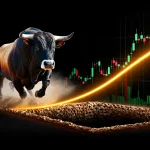Mob Mentality: The Frenzy of the Masses or the Power of Transformation?
Jan 7, 2025
Like wildfire, mob mentality spreads quickly—wild, unrestrained, and dangerous. But within this storm of collective irrationality lies a hidden truth: the mob can be moulded into a powerful force for progress. It’s the paradox of human behavior: driven by an innate desire for belonging, the crowd can either tear down or build up, destroy or create. In the right hands, its energy can be channeled for change. The question is—who will control the fire?
The Collective Mind: When Individuals Lose Themselves
Gustave Le Bon, the first to unravel the psychological fabric of crowds, described the individual’s loss of self when swallowed by the collective. In “The Crowd: A Study of the Popular Mind,” he observed that the crowd turns a rational thinker into an irrational force driven by primal urges. It’s as though each individual becomes a mere thread in a powerful tapestry, unable to resist the hypnotic pull of the collective unconscious. For Freud, this loss was not just a psychological shift but a regression—a return to a more primitive, emotional state. Under the right conditions, the ego vanishes, and the group’s identity becomes all-encompassing.
Muzafer Sherif’s Robbers Cave Experiment unmasked the destructive potential of mob mentality—how easily prejudice and violence grow when groups are pitted against each other. What starts as a spark of division can quickly become a conflagration of hatred, escalating until the only thing left is chaos.
The Spin Doctors: Crafting the Mob’s Frenzy
But there’s more than meets the eye. The power of the mob is not inherent—it’s shaped by the hands that steer it. Spin doctors and provocateurs harness the deep psychology of collective behavior to stir the pot, knowing that people are drawn to the noise and the drama. We’ve seen it repeatedly: crowds pushed to act not based on logic, but on stories, emotions, and shared beliefs.
Take the GameStop frenzy of early 2021—a symbolic battle between the underdog retail investor and the Wall Street elite. At its core, it was a manifestation of mob mentality. Yet for some, it was the very definition of empowerment—shaking up the financial establishment. Robert Shiller, the behavioral finance expert, highlights how collective actions, driven by narratives and shared causes, can disrupt markets in profound ways. The question remains: is this irrationality, or is it a calculated act of rebellion?
From Chaos to Change: The Power of Collective Action
Mob mentality doesn’t always have to be destructive. Consider the protests after George Floyd’s death—an eruption of collective anger and grief that ignited not just outrage but introspection and systemic change. Here, the mob was not a mindless mob—it was a catalyst for a worldwide movement that forced society to confront its injustices. It’s proof that while mob mentality can veer into chaos, it can also transform into something larger than itself—something meaningful.
Social psychologists like Malcolm Gladwell and Gustave Le Bon examined how collective emotions can trigger profound shifts in societal norms. What starts as a wave of raw emotion can become a tidal force of change, reshaping systems that have long been stagnant.
Harnessing the Mob: Transforming Negativity into Opportunity
What distinguishes chaos from change? Discernment—the ability to see through the storm of collective emotion and find the potential for growth within. Nobel laureate Daniel Kahneman urges us to understand the biases and cognitive patterns that govern group behavior. By mastering these principles, we can recognize when the crowd is misled or when it’s an opportunity waiting to be seized.
Personal Growth Amidst the Storm
The key to navigating this world of collective impulses lies in self-awareness and clarity of purpose. Mob mentality, when harnessed, can break down barriers and bring about change. But in the maelstrom of collective energy, it’s essential to remain anchored—guided by reason, empathy, and a deeper commitment to progress. As we move through life’s turbulent waters, let us transform the mob’s negative pull into a force for our own personal growth and societal evolution. When the crowd roars, will you be swept away—or will you lead the charge?
The Perpetual Cycle of Panic: Breaking Free from Crowd Conformity
In the perpetual cycle of market panic and herd behaviour, one cannot help but feel trapped in a twisted version of “Groundhog Day” – an endless loop of collective irrationality. Solomon Asch’s seminal experiments on conformity revealed the potent influence of majority opinion, even in the face of irrefutable evidence. The financial realm is no exception, where the masses blindly follow the herd, selling off assets at the mere whiff of a perceived crisis.
As Machiavelli sagely observed, “The masses have no mind of their own; they are impressionable and yielding.” This malleability is expertly exploited by the peddlers of doom, wrapping their agendas in the guise of “market crashes” to incite panic. Yet, for the astute investor, these moments of hysteria present golden opportunities to acquire quality stocks at discounted prices while the herd flees in terror.
The Volatility Vortex: Embracing the Maelstrom
In our modern age of volatility, extreme times breed extreme reactions, as cautioned by Philip Zimbardo, the architect of the Stanford Prison Experiment. The masses, gripped by fear, are prone to descending into a vortex of irrationality and violence. However, those who embrace volatility can navigate the turbulence and seize opportunities that the panicked masses overlook.
The Social Identity Paradox: Strength in Individualism
Steve Reicher’s work on social identity challenges the notion that crowds invariably lead to a loss of personal identity, positing that a shared purpose and collective identity can drive group behaviour. In investing, this paradox manifests as a choice: surrendering to the herd or forging a distinct path guided by reason and independent thought.
True strength lies in the courage to stand apart, question narratives, and make decisions rooted in facts and critical analysis. Only through this commitment to independent thinking can we transcend the allure of mob mentality and chart our course towards lasting prosperity.
Insights from Esteemed Thinkers
1. Gustave Le Bon (1841-1931): Le Bon, a French social psychologist, argued that individuals in a crowd lose their sense of personal responsibility and are likelier to engage in irrational and violent behaviour.
2. Sigmund Freud (1856-1939): Freud, the father of psychoanalysis, believed that crowds allow individuals to unleash their primitive instincts and emotions, leading to a loss of individual identity and a heightened susceptibility to suggestion.
3. Wilfred Trotter (1872-1939): Trotter, an English surgeon and social psychologist, introduced the concept of the “herd instinct,” suggesting that individuals have an innate tendency to conform to the behaviours and beliefs of their social group.
Mob Mentality in Financial Markets
The dot-com boom
The dot-com boom of the late 1990s is a classic illustration of the mob mentality that has permeated the financial markets during the past 20 years. During this period, investors eagerly poured funds into internet-based companies without adequately examining their financials or business models. This behaviour resulted in a sharp rise in stock prices for many unprofitable companies with unsustainable operations.
GameStop short squeeze: The hype intensified as more investors flocked to the market, fueling further speculation and investment. Eventually, the bubble burst, causing significant financial losses as stock prices plummeted.
Cryptocurrency boom: Another instance of mob mentality in financial markets is the GameStop short squeeze in early 2021. A group of novice investors on the Reddit forum r/WallStreetBets collaborated to inflate the stock price of GameStop, a floundering brick-and-mortar video game retailer. Their goal was to compel hedge funds that had shorted the stock to repurchase it at higher prices.
Housing market bubble: The frenzied buying and investing in GameStop caused a stock price surge. However, the Housing bubble quickly burst, and numerous investors who had entered at elevated prices experienced substantial losses when the stock price fell. The GameStop short squeeze exemplifies how social media and online communities can magnify mob mentality and impact financial markets.
Another example of mob mentality in financial markets is the cryptocurrency boom, particularly the rapid rise and fall of Bitcoin in 2017. During this time, the price of Bitcoin skyrocketed from around $1,000 at the beginning of the year to nearly $20,000 by December. This surge was fueled by widespread media coverage, speculation, and a fear of missing out (FOMO) among investors who believed they could make quick profits.
The Contrarian Investor’s Edge: Fierce Independence in the Face of Chaos
When the herd succumbs to fear and panic, contrarian investors seize the moment, turning market hysteria into opportunity. Robert Cialdini’s principle of social proof warns of the powerful pull of groupthink, which can trigger irrational selling sprees. Elias Canetti’s insight into crowd dynamics highlights how emotional contagion amplifies chaos, often fueled by sensationalist financial media.
Contrarians thrive where conformity collapses. Rooted in the behavioural insights of Kahneman, Tversky, and Thaler, they exploit the irrational tendencies of loss aversion and mental accounting, using these flaws to navigate uncertainty precisely. Inspired by investing greats like Benjamin Graham and Peter Lynch, they ignore speculative frenzies and focus on fundamentals and value.
As Nassim Taleb champions, contrarians embrace uncertainty, using volatility as a weapon. Their success lies in questioning consensus, defying the mob, and maintaining fierce independence, proving that the wisest path is often the loneliest.
Enrich Your Knowledge: Articles Worth Checking Out
Investing for Dummies 2023: Navigating the Market with Confidence and Savvy











